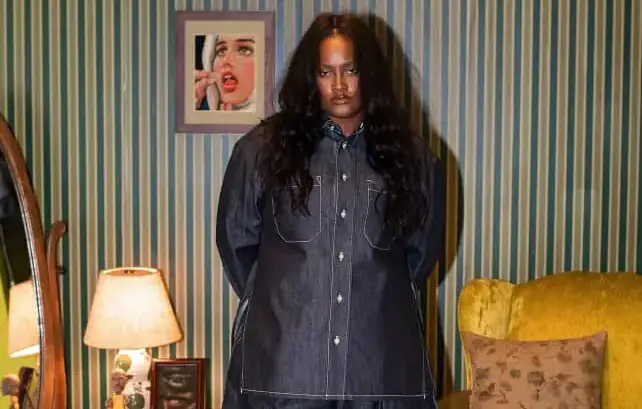Market Reality Check

The numbers don’t lie, and they’re speaking loudly. The plus-size clothing market is valued at approximately USD 24-30 billion globally and is forecast to grow significantly in the coming years. What’s absolutely wild is that this massive market was virtually ignored by major retailers for decades.
We’re talking about a market that’s bigger than many entire countries’ GDP, yet for years fashion executives acted like size 16 and above shoppers simply didn’t exist. That denial created the exact opening small business owners needed to step in and fill the gap. While corporate boardrooms were debating whether plus-size was “worth it,” entrepreneurs were building loyal customer bases one perfectly fitted garment at a time.
Building Community Instead of Just Customers

Here’s where small plus-size businesses absolutely crush the big brands – they understand that their customers aren’t just looking for clothes, they’re looking for belonging. When customers feel connected to brands, more than half of consumers (57%) will increase their spending with that brand and 76% will buy from them over a competitor. This connection becomes even more powerful when it’s built around shared experiences and values.
Building community means actively engaging with your customers on social media, creating content that celebrates body positivity, and fostering conversations that go beyond just selling products. These entrepreneurs understand that their customers want to feel part of something bigger than just a transaction – they want to belong to a movement that celebrates their identity and worth. Big brands can spend millions on advertising, but they can’t manufacture the authentic relationships that come naturally to founder-led businesses.
The Power of Strategic Pricing

Smart plus-size entrepreneurs aren’t racing to the bottom on price – they’re positioning themselves strategically in the market. By price range, mass-market labels account for a significant majority share of the plus-size clothing market; premium and luxury lines are expected to expand at a 6.34% CAGR between 2025-2030. This tells us that while most of the market is still budget-focused, there’s serious growth happening in the premium segment.
The opportunity here is brilliant for small businesses. While big brands fight each other in the crowded mass market, smaller companies can carve out profitable niches in mid-range and premium segments. Customers in these segments are willing to pay more for quality, fit, and the personal touch that only smaller brands can provide.
Technology Becomes The Great Equalizer

Advancements in digital space, such as body scanning technology and artificial intelligence-based personal recommendations, are making shopping easier. Entrepreneurs who invest in these technologies early are creating competitive advantages while genuinely improving their customers’ shopping experiences.
AI is reshaping fashion retail, with a growing majority of consumers seeking AI-driven product recommendations and 50% of fashion executives emphasizing AI’s role in product discovery by 2025. Digital-first companies are leading the charge, pouring investments into AI-driven sizing tools and virtual try-ons to address persistent fit challenges. The beauty of this technology revolution is that small businesses can access these tools without building them from scratch, leveling the playing field with giants who used to have tech advantages.
Focus on Categories That Actually Matter

Data reveals exactly where plus-size customers are spending their money, and smart entrepreneurs are paying attention. In 2025, casual wear commands a 30.80% share of the plus-size clothing market, underscoring a clear consumer tilt towards comfort and versatility. This trend signals a broader acceptance of relaxed fashion, with plus-size shoppers gravitating towards pieces that seamlessly fit various occasions.
While casualwear has long dominated, activewear is rapidly emerging as a leading category. This shift underscores consumers’ growing preference for high-performance apparel that champions comfort and movement, regardless of body type. Big brands are often slow to pivot their massive operations, but nimble small businesses can quickly respond to these shifting preferences and capture market share before the giants catch up.
Digital-First Disruption Strategy

The retail landscape is shifting dramatically, and small businesses are perfectly positioned to ride this wave. By distribution channel, offline retail captured 72.63% of revenues in 2024, whereas online platforms are forecast to post a 9.37% CAGR to 2030. Smart plus-size entrepreneurs are getting ahead of this trend by building robust online presences that cater to their customers’ shopping preferences.
The digital space offers unlimited shelf space and the ability to tell your brand story without traditional retail gatekeepers. According to recent data, e-commerce accounts for approximately 15-16% of total U.S. retail sales, making a strong digital presence more important than ever. While big brands struggle with expensive retail leases and inventory management across hundreds of stores, small businesses can operate lean, test quickly, and scale profitably online.
The Funding Reality and Bootstrap Innovation

Let’s talk about the elephant in the room – access to capital. According to various studies, there remains a significant funding gap between female and male entrepreneurs in startup financing. That’s not a small gap; it’s a canyon.
All of this makes bootstrapping the default path for many plus size fashion founders. With traditional capital so hard to access, most turn to personal savings or side hustles to launch their brands. But here’s the thing – this constraint often breeds incredible innovation. When you can’t throw money at problems, you get creative with solutions. You build authentic relationships with customers, you find efficient ways to operate, and you create sustainable business models from day one.
Breaking Through Investor Bias

Venture capital is built on “pattern matching”; in other words, investors fund what looks familiar. And unfortunately, the typical “founder image” they’re used to? White, thin, male, hoodie-wearing, and straight out of Stanford. If you don’t match that mental mold, you’ve got an uphill battle before you even open your pitch deck!
Because they don’t understand the space, some investors incorrectly label these brands as “boutique” or “niche,” despite the fact that we’re talking about a multi-hundred-billion-dollar global market. Plus size founders are walking into rooms built to overlook them; carrying businesses with massive upside, while having to jump through hoops no one else even sees. The deck is stacked, but the game isn’t over. It just means we’ve got to play it smarter, louder, and more unapologetically.
Global Expansion Opportunities

While established brands are still figuring out domestic plus-size markets, savvy entrepreneurs are already eyeing international opportunities. The plus-size clothing market in Asia Pacific is projected to grow at the fastest CAGR of 5.2% from 2024 to 2030. The Asia Pacific market is growing, driven by increasing consumer awareness and demand for inclusive fashion.
This spending pattern is particularly evident in emerging markets, where Tier II and III cities are experiencing explosive growth at 25% CAGR, compared to 15% in metro areas. Small businesses with digital-first approaches can tap into these growing markets without the massive infrastructure investments required by traditional retailers. This is about getting there first and building brand loyalty before the big players even realize the opportunity exists.
Personalization at Scale

AI and technology are making personalization affordable for small businesses in ways that seemed impossible just a few years ago. AI fit tools, virtual try-ons, and personalized recommendations are making it easier to shop online without the dreaded guesswork. According to McKinsey, over 50% of fashion execs believe generative AI will be essential for product discovery by 2025.
Given the persistent fit challenges in plus-size fashion, brands are leveraging AI and 3D scanning tools to enhance accuracy and minimize returns. B2B tech firms like True Fit and Size Stream are providing retailers with cutting-edge virtual fitting tools and tailored size suggestions based on individual body metrics and shopping history. Brands like BloomChic, which harnesses customer feedback and data analytics for product refinement, are reaping rewards by closely aligning with consumer expectations.
Direct-to-Consumer Advantage

Plus-size entrepreneurs are using social media, e-commerce platforms, and digital marketing to reach customers who may not have access to size-inclusive options in their local areas. This direct-to-consumer approach allows for better margins and stronger customer relationships. While big brands navigate complex wholesale relationships and retail partnerships, small businesses can build direct pipelines to their customers.
This direct relationship means faster feedback loops, better understanding of customer needs, and the ability to pivot quickly when market conditions change. Small businesses contribute 43.5% of the U.S. GDP, proving their massive economic impact. That’s not because they’re trying to be everything to everyone – it’s because they’re laser-focused on serving their specific audiences incredibly well.
The Sustainable Competitive Moat

Perhaps the most powerful advantage small plus-size businesses have is authenticity – something that can’t be bought or manufactured. Because let’s be real, when everything gets corporatized, consumers start craving something real again. And that’s where smaller, founder-led brands shine. But to compete, they need more than sales from us in the plus size fashion space, they need capital… and the proper room to grow.
The plus-size market isn’t just growing – it’s exploding with opportunity for entrepreneurs who understand how to play to their strengths. While big brands lumber through corporate bureaucracy and struggle with authenticity, nimble small businesses are building communities, leveraging technology, and creating sustainable competitive advantages that will be incredibly difficult to replicate. The question isn’t whether small plus-size businesses can compete with the giants – it’s whether the giants can learn to compete with the passion and precision of entrepreneurs who truly understand their customers.






